WMG News
WMG Professor made Fellow of the Royal Academy of Engineering
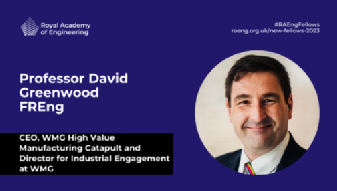 WMG at the University of Warwick’s Professor David Greenwood has been elected a Fellow of the prestigious Royal Academy of Engineering.
WMG at the University of Warwick’s Professor David Greenwood has been elected a Fellow of the prestigious Royal Academy of Engineering.
Professor Greenwood is CEO of the High Value Manufacturing Catapult and Director for Industrial Engagement at WMG.
Professor Greenwood has been elected as part of a group of 73 leading figures in the field of engineering and technology to the fellowship.
The group consists of 60 Fellows, eight International Fellows and five Honorary Fellows, each of whom has made exceptional contributions to their own sector, pioneering new innovations, leading progress in business or academia, providing high level advice to government, or promoting wider understanding of engineering and technology.
The new Fellows will be formally admitted to the Academy at a special ceremony in London on 28 November, when each Fellow will sign the roll book. In joining the Fellowship, they will lend their unique capabilities to achieving the Academy’s overarching strategic goal to harness the power of engineering to create a sustainable society and an inclusive economy for all.
Professor Greenwood commented: "I am truly honoured to be elected as a Fellow of the Royal Academy of Engineering. The UK has tremendous capability in engineering and manufacturing and the work of the Royal Academy is pivotal in helping to achieve its full potential. I look forward to playing my part in that."
Professor Sir Jim McDonald FREng FRSE, President of the Royal Academy of Engineering, said:
“Engineering is everywhere, but nowhere the same, and our new Fellows represent the great breadth and diversity of engineers who are striving to address some of the world’s most complex challenges – benefiting society and the economy in the process. From next generation power networks and water systems to quantum computing and artificial intelligence, our new Fellows are shaping the future.
“We live in an era of rapid change across our communities, our country, and of course our planet. Today we welcome to our Fellowship an inspiring group of people who are harnessing their creativity, courage and commitment to drive positive change in the world around us and we look forward to their contribution to our work.”
View the full list of 2023 fellows here.
WMG charges ahead with battery research
WMG, at the University of Warwick, has received a share of £19 million from the Faraday Institution - the UK’s flagship institute for electrochemical energy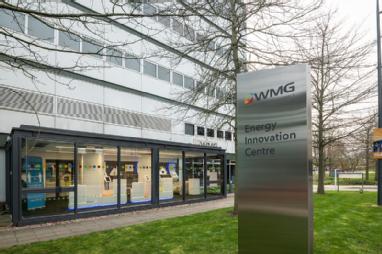 storage research.
storage research.
The funding has been allocated to four key battery research projects aimed at delivering an impact for the UK. These existing projects across three different research areas — next generation cathode materials, electrode manufacturing and sodium-ion batteries — have been reshaped to focus on the areas with the greatest potential for success.
WMG is taking a key role in two of the four, reshaped projects entitled FutureCAT and Nextrode.
WMG’s Professor of Battery Innovation, Louis Piper, will now co-lead FutureCAT, a battery cathode research project, focusing on understanding novel redox processes as a route to stabilise both high capacity, high performance, nickel rich and emerging cathodes and scalable designer morphologies. The project will build on its success in developing reliable, scalable routes to deliver a longer lifetime, high-energy/power cathodes, essential for electric vehicles.
Whereas in Nextrode, a battery electrode project, WMG is one of six university partners, led by the University of Oxford, alongside six industry partners. Researchers at WMG will investigate ways to make electrodes for Li-ion batteries unlocking the electrochemical potential.
Professor Pam Thomas, CEO, Faraday Institution, commented: “The Faraday Institution remains steadfast in its commitment to identify and invest in battery research initiatives that hold the greatest potential for making significant societal, environmental, and commercial contributions. This announcement signals the completion of our latest round of project refocusing, enabling us to allocate even more effort towards those areas of research that offer maximum potential in delivering transformative impact.”
James Gaade, Research Programme Director commented: “We are pleased that the reshaping process has bolstered the capabilities and expertise of researchers on the four projects. The realignment includes a focus around research into sustainable manufacturing methods and materials, and the need to further develop and scale up manufacture of promising materials discovered in the first three years of the projects.”
Project information
FutureCat – High nickel content, high performance cathode materialsLink opens in a new window
FutureCat, co-lead by WMG’s Professor Louis Piper, and the University of Sheffield’s Professor Serena Cussen is targeting step-changes in:
- Understanding novel redox processes as a route to stabilise both high capacity, high performance, nickel rich and emerging cathodes. The project continues its focus on doped and dual-doped lithium nickel oxides (LNO) (both polycrystalline and single crystals), including use of protective coatings. The team will also investigate the use of polyanionic cathodes, use modelling to inform the search for new candidate materials, and research designer electrolytes with the intention of stabilising the interphase layer.
- Scalable designer morphologies. The project will build on its success with doped-LNO in developing reliable, scalable routes to deliver a longer lifetime, high-energy/power cathodes through the use of gradient morphologies, co-doped cathodes (with the aim of delivering reversible discharge capacities exceeding 220 mAh/g), single crystal particles and thin coatings.
- Materials delivery: The scale up of the high nickel W-LNO material previously developed by FutureCat is being transferred to the Degradation project for testing in industry-relevant pouch cells. FutureCat will continue to investigate the manufacturing scale-up of other Ni-rich cathode materials, down-selecting promising active materials based on earth-abundant elements. Research includes the use of laser patterning to increase power densities, investigation of cracking as a failure mechanism to determine routes to resilient cathode manufacture, atomic layer deposition of coatings to improve electrode longevity, and optimisation of cycle life through the use of electrically conductive binders.
Nextrode – electrode manufacturingLink opens in a new window
Nextrode is focused on researching, understanding and quantifying the potential of smart electrode manufacturing to reduce manufacturing costs and improve the performance of batteries. Benefits could be realised in both mature material systems already used commercially and in new emerging high performance battery systems. The project is developing new practical manufacturing innovations – including traditional slurry cast electrodes and novel low or no solvent electrodes – that could deliver the benefits of smart electrodes to the industrial scale and improve sustainability of processes.
The project is researching the underpinning manufacturing science that could alleviate constraints in electrode manufacturing through engineering particle design and improved understanding of the relationship between powder properties and deposition/calendering techniques. Nextrode is designing manufacturing process steps and using advanced in-line measurements to enable slurry casting to be brought under closed-loop control. Researchers are manufacturing new arrangements of anode and cathode materials, identifying conditions where benefits are maximised and developing cells that expand the energy-power-lifetime design space.
The new phase of research projects described will progress over the two years from 1 October 2023 to 30 September 2025.
Find out more about WMG’s Electrochemical Engineering research here: Electrochemical Materials (warwick.ac.uk)
For more information on the Faraday Institution, visit www.faraday.ac.ukLink opens in a new window
WMG’s Professor Khastgir quoted in parliamentary inquiry’s call for action on self-driving vehicles
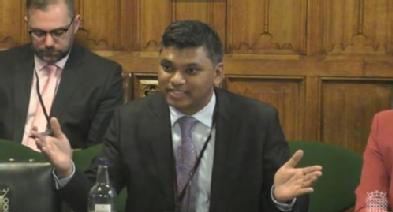 Today (Friday 15th September), the House of Commons Transport Select Committee released its cross-party report on self-driving vehicles, calling for urgent legislation to be proposed by the Government to support innovators, regulate this emerging technology sector, and give the public confidence in the safety of connected and autonomous mobility.
Today (Friday 15th September), the House of Commons Transport Select Committee released its cross-party report on self-driving vehicles, calling for urgent legislation to be proposed by the Government to support innovators, regulate this emerging technology sector, and give the public confidence in the safety of connected and autonomous mobility.
Professor Siddartha Khastgir, Head of Verification and Validation at WMG, University of Warwick, who gave evidence to the inquiry and is quoted in the report, said:
"The Transport Select Committee is right to say self-driving vehicles (SDV) are a British success story and that our domestic innovators have energy, creativity, and expertise.
"To secure this progress, we need to ensure consumers can be confident of the safety of SDVs, because, as I told the Committee we can have the safest technology, but if we cannot convince the public, they will never use it.
"So, I’m delighted the Committee is calling for the Government to ‘bring forward and pass comprehensive legislation in the next parliamentary session’ to put in place a robust regulatory framework For SDVs, and I look forward to working with industry, ministers, civil servants and parliament to ensure the public can be confident in the safety of the next generation of transport innovation."
Professor Khastgir provided written and oral evidence to the Transport Committee’s Self-Driving Vehicles Inquiry. His evidence has been referenced (significantly) in this report, including the use of the Operational Design Domain (ODD) to design driving conditions so that SDVs can be tested and operate safely; the importance of ‘informed safety’ that the technology developers need to equip the users about the capabilities and limitations of the self-driving technology so they can use the technology safely.
Read the report here: https://committees.parliament.uk/committee/153/transport-committee/news/197460/legislation-needed-to-continue-great-british-success-story-of-selfdriving-vehicles/Link opens in a new window
WMG and Wayve received substantial government funding to research and develop AI safety in self-driving vehicles
- WMG at the University of Warwick and leading self-driving technology developer Wayve have received £1.9 million in government funding to lead a research project on AI safety in self-driving vehicles
- This pioneering project, DriveSafeAI, aims to develop scalable methodologies and mechanisms to prove that the use of AI is safe for self-driving vehicles, which national and international self-driving vehicle developers can adapt the findings to their technology developments
- The project supports the UK government’s ambition to make the UK the leader in AI and its vision of deploying self-driving vehicles in 2025
WMG at the University of Warwick and leading self-driving vehicle technology developer Wayve have been awarded £1.9 million to undertake research to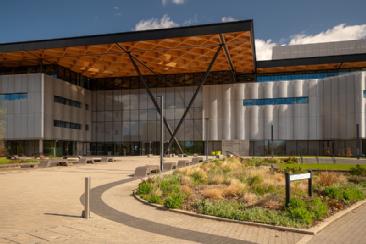 ensure the safe use of AI in self-driving vehicles.
ensure the safe use of AI in self-driving vehicles.
This project, DriveSafeAI, is taking the initiative to research and develop scalable mechanisms and methodologies to prove that AI is safe to use in self-driving vehicles. WMG is a world-class research institution with internationally recognised research capabilities in safety assurance of self-driving technologies, combined with Wavye’s expertise in developing end-to-end machine learning for self-driving, a set of evidence- and data-based methods and tools will be developed and made available for global self-driving developers to test their technologies. The research result will help shape the UK's policy and regulatory framework for AI in the future.
Self-driving vehicles can potentially bring £42 billion in economic benefits to the UK. Proving the safety of AI is a crucial step to unlocking this huge market. However, currently, there is no internationally or nationally agreed methodology in place to prove AI is safe to use in self-driving technologies, which hinders the commercialisation of self-driving vehicles. Therefore, this project will create a solution for AI safety assurance and develop societal trust in AI and self-driving technology.
More information about the DriveSafeAI project and the funding
DriveSafeAI is part of CCAV’s Commercialising CAM Supply Chain Competition (CCAMSC).
The Commercialising CAM programme is funded by the Centre for Connected and Automated Vehicles, a joint unit between the Department for Business and Trade (DBT) and the Department for Transport (DfT) and delivered in partnership with Innovate UK and Zenzic.
The £18.5m CCAMSC competition was launched in October 2022 to support the deployment of self-driving vehicles, by strengthening the capabilities of the sovereign UK CAM supply chain and is part of the Government’s vision for self-driving vehicles. Connected and automated mobility 2025: realising the benefits of self-driving vehicles.
Alex Kendall, CEO and Co-founder of Wayve, said: "At Wayve we know that confidence in our technology is crucial to commercialisation and widespread adoption of self-driving vehicles. Leveraging AI, we have the chance to bring the benefits of self-driving vehicles to everyone’s door. But first, securing trust in AI is paramount.
"That’s why we’ve been working closely with government and academia to ensure the methodologies we use to evidence safety are clear and trustworthy. Today, we’re excited to announce a formal partnership with WMG, University of Warwick, global leaders in the safety of artificial intelligence and autonomous systems. DriveSafeAI will give the public and policymakers confidence in this technology, which has the potential to revolutionise transport."
 Professor Siddartha Khastgir, Head of Verification & Validation at WMG, University of Warwick, said: "AI – and particularly embodied AI – like self-driving vehicles, is one of the biggest topics currently discussed in society. Deploying this technology safely is essential to realising the huge opportunity AI can offer society.”
Professor Siddartha Khastgir, Head of Verification & Validation at WMG, University of Warwick, said: "AI – and particularly embodied AI – like self-driving vehicles, is one of the biggest topics currently discussed in society. Deploying this technology safely is essential to realising the huge opportunity AI can offer society.”
“At WMG, through DriveSafeAI we are excited to be partnering with Wayve, a leader in self-driving vehicle technology, to help shape the safe AI landscape in the UK and globally.”
“We believe the safety of this technology needs to be proven collaboratively, in a scalable manner and that future policy should have strong research foundations."
Note to editors
About Wayve
Wayve is on a mission to reimagine autonomous mobility through embodied intelligence. Founded in 2017, Wayve is made up of a global team of experts in machine learning and robotics from top organisations around the world. We were the first to deploy autonomous vehicles on public roads with end-to-end deep learning, pioneering the AI software, lean hardware, and fleet learning platform for AV2.0: a next-generation autonomous driving system that can quickly and safely adapt to new driving domains anywhere in the world.
Wayve has raised over $258M and is backed by Eclipse Ventures, D1 Capital Partners, Baillie Gifford, Moore Strategic Ventures, Balderton Capital, Virgin, and Ocado Group. The team is based in London and California, with a fleet of vehicles testing in cities across the UK. Wayve aims to be the first to deploy autonomy in 100 cities. To learn more, visit www.wayve.ai.
Robocrop: The robot assistants helping farmers to increase productivity
The future of farming could involve robots– as farmers seek to address labour shortages and increase crop yields.
Researchers at WMG at The University of Warwick are investigating how they can apply autonomous robotics to greenhouses and croppable fields.
Continuous and repetitive monitoring of crops is vital for fruit and veg production, as the sooner that pests, diseases and infrastructure issues can be spotted, the sooner they can be rectified.
This means that growers get the information they need to make quick decisions that save their crops and reduce losses.
A state-of-the-art Crop Monitoring Robot (Crombot) is proving that robots could become the perfect helper to support growers – especially when faced with labour shortages. Crombot is an autonomous four-wheeled robot, able to navigate itself around a green house, avoiding other workers and even following specific workers on command.
Crombot’s robotic arm has a camera on the end which allows it to carry out all the required monitoring duties, and can even identify the ripeness levels of strawberries, letting the grower know which areas of the greenhouse is ready to be picked.
Other developments by the group include "Spot", an autonomous four-legged robot dog supplied by Boston Dynamics, for use in agriculture. Spot is designed to work in difficult and hazardous environments, and this innovative robot system has proven itself so far to be very impressive in handling a variety of greenhouse and outdoor environments.
Benefits of this system include being able to walk up and down steps, over heating rails and other obstacles as well as tackling muddy fields.
By working in close collaboration with the University’s School of Life Sciences (SLS) at the Warwick Crop Centre on the Innovation Campus Stratford-upon-Avon, the WMG team have been able to combine their robotics expertise with the plant science expertise of SLS to create this extremely promising research.
This has laid the foundation for the group to now explore new capabilities such as automated planting and harvesting.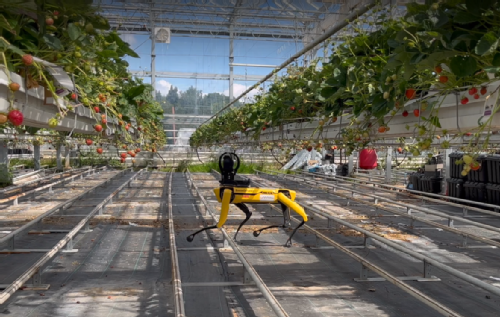
Harry Boyce, Project Engineer at WMG at the University of Warwick added: “Our research with Crombot aims to address growers’ scepticism of new technology and, most importantly, cost. It will unlock the potential for adoption of robotics solutions in horticulture, and facilitate a UK offering to a huge global market.
Alex Keller, Principal Engineer at WMG at the University of Warwick, said: “Boston Dynamic’s Spot robot could be an ideal solution for an agricultural monitoring robot, but it is currently very expensive and further research is needed to understand if Spot could progress to challenges such as harvesting and more.
“This is why we are continuing to develop our in-house robotic capabilities, so that we can help industry to create robotic solutions that are affordable and realistic for the grower, which still deliver high impact and high return on investment.
“We hope to hear from growers who would like to be involved in this research – finding out how they can incorporate robots in their practices too.”
Find out more about WMG here https://warwick.ac.uk/fac/sci/wmg/ or contact wmgbusiness@warick.ac.uk.
Notes to Editors
University of Warwick press office contact:
Annie Slinn
Communications Officer | Press & Media Relations | University of Warwick
Email: annie.slinn@warwick.ac.uk
International experts developed the foundational ISO standard for the safety of self-driving vehicles
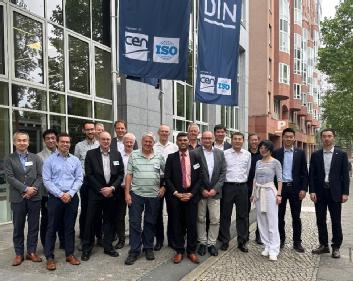 A new international standard has been published which lays the foundations for safe deployment of self-driving vehicles by creating a common approach to define the operating conditions of self-driving vehicles, which is also known as the Operational Design Domain (ODD) (i.e., operating conditions).
A new international standard has been published which lays the foundations for safe deployment of self-driving vehicles by creating a common approach to define the operating conditions of self-driving vehicles, which is also known as the Operational Design Domain (ODD) (i.e., operating conditions).
Led by Professor Siddartha Khastgir from WMG, University of Warwick, UK, and supported by an international group of experts, the very first international standard for safe operation of self-driving vehicles, Road Vehicles — Test scenarios for automated driving systems — Specification for operational design domain – ISO 34503 has been published. This standard will be relevant to every self-driving vehicle developed and manufactured anywhere in the world. The new standard is based on BSI PAS 1883, developed by BSI the UK National Standards Body.
In simplistic terms, ODD is a definition of where your self-driving vehicle is going to operate. This standard provides specifications for defining these operating conditions in a common manner.
The standard classifies ODD into three key categories:
· Scenery elements: non-movable elements (e.g., roads, bridges, traffic lights),
· Environment conditions: weather and other atmospheric conditions; and
· Dynamic elements: all movable objects and actors.
The importance of the concept of ODD is highlighted in the latest European Union’s Act on Automated Driving System (adopted in Aug 2022) which puts the concept of ODD as a cornerstone of the safety assurance process of an automated vehicle. Similar approaches are being considered at the upcoming regulations at United Nations Economic Commission for Europe.
This international standard is a big step to facilitate the commercialisation of self-driving vehicles in a wider global society while also safeguarding the safety of this emerging technology. International organisations and local governments or regulatory agencies can use this standard as a guide to develop their regulations and policies on self-driving vehicles. Autonomous vehicle developers and manufacturers around the world can now design and test their technology based on internationally aligned safety benchmarks, create accurate marketing and communication materials, and build societal trust in the technology.
WMG in collaboration with BSI committee AUE/15 Safety related to vehicles, worked with global partners in countries such as United States, Germany, Japan, China, France, Austria, Canada, Israel, Sweden, Finland, South Korea, Australia, to develop and finalise the ISO standard for the safety of automated vehicles.
Professor Siddartha Khastgir, Head of Verification & Validation, Intelligent Vehicles said:
“Defining the Operational Design Domain is the first step in designing a safe self-driving vehicle. Furthermore, due to the diversity in stakeholders in this ecosystem (e.g., developers, regulators, local authorities etc.), it is essential we have a common way to define such a fundamental concept of safety.
“Successful standardisation efforts are only possible with true international collaboration. I am grateful to experts from various countries worldwide who have engaged and contributed actively to this standard. I am pleased to see more efforts kick-starting which building on the concept of ODD and this standard.”
This standardization activity is underpinned by strong research outcomes from the CCAV and Innovate UK funded OmniCAV research project by WMG; and also, by the research conducted as part of Professor Khastgir’s UKRI Future Leaders Fellowship.
Nick Fleming, Associate Director, Transport and Mobility, BSI said:
“It’s exciting to see the launch of this new international standard, given the potential benefits that can be realized by testing automated vehicles so they can operate safely on our roads. Having a common language to describe the Operational Design Domain (ODD) of an automated vehicle, with the ODD effectively describing the environment and conditions that an automated vehicle is capable of operating in, will be valuable to test and deploy these vehicles safely.
“This new ISO standard has been inspired by the UK document, BSI PAS 1883:2020, the first taxonomy for ODDs developed in conjunction with UK experts and the government’s Centre for Connected and Automated Vehicles (CCAV).
“BSI would like to thank Professor Khastgir for his effort in helping to lead this work at the international level which, along with BSI PAS 1883, shows the leadership the UK is having in the development of global standardization for automated or self-driving vehicles.”
Sarah Gates, Director of Public Policy at Wayve, said:
“We’re pleased to see the launch of this new international standard. The concept of ODDs is the basis of deploying self-driving vehicles safely. A common way of describing ODDs across industry is therefore vital for creating the highest safety standards, bolstering public trust and supporting the regulatory frameworks required to commercially deploy self-driving technology on a global scale.
“We look forward to continuing to work closely with WMG to ensure that safety standards for self-driving technology are rigorous, and to increase confidence in the exciting technology we’re developing here at Wayve, which will unlock a safer, smarter and more sustainable transport system.”
ISO 34503 was developed by ISO technical committee ISO/TC 22/SC 33 Vehicle dynamics, chassis components and driving automation systems testing.
It can be purchased from your national standardisation body or through the ISO Store.
This standardisation activity is underpinned by strong research outcomes from the CCAV and Innovate UK-funded OmniCAV research project by WMG; and also, by the research conducted as part of Professor Khastgir’s UKRI Future Leaders Fellowship.
NOTE TO EDITORS: Link to ISO 34503: https://www.iso.org/standard/78952.html
Media contact: Annie Slinn, Communications Officer (Sciences), Annie.Slinn@warwick.ac.uk | Caitlin Evans, WMG Marketing and Communications Executive, Caitlin.Evans@warwick.ac.uk
Project workshop addresses cyber-security in connected and autonomous mobility
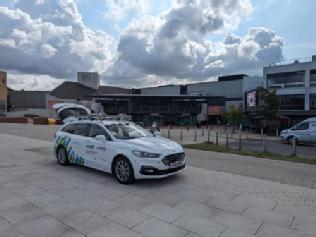 Researchers from WMG, at the University of Warwick, were pleased to welcome partners and guests to a live trial and project workshop on the AirQKD project.
Researchers from WMG, at the University of Warwick, were pleased to welcome partners and guests to a live trial and project workshop on the AirQKD project.
AirQKD addresses the cyber security of Connected and Autonomous Vehicles (CAV) and specifically addresses components, manufacturing, software, and testing for last-mile Quantum Key Distribution (QKD) systems between shared parties for 5G and connected cars.
It is an Innovate UK funded collaboration between BT; Lexden Technologies; OLC; Duality, Bristol University; Fraunhofer Centre for Applied Photonics; Strathclyde University; WMG; Bay Photonics; Heriot Watt University; Angoka; ArQit; Nu Quantum; National Physical Laboratory; CSA Catapult and Edinburgh University.
The trial combines BT’s expertise in building quantum-secure networks using QKD – an essentially un-hackable, cutting-edge technique for sharing encryption ‘keys’ between locations using a stream of single photons) with other new techniques for applying quantum security to mobile devices, developed by UK start-ups Nu Quantum, Angoka and Duality.
On the University of Warwick campus, as part of the Midlands Future Mobility testbed, WMG has created a Vehicle to Infrastructure (V2I) testing facility enabling AirQKD partners’ technology in key management, key consumption, and security protocols to be used for secure communications.
The AirQKD system implements Free Space Optics (FSO) cryptographic key generation and standards-compliant key management. WMG is now managing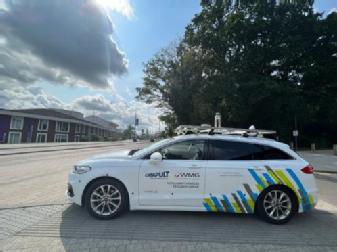 the workstream between telecommunications (4G/5G cellular at BT’s Adastral Park site) and V2I communications on the University of Warwick campus. In combination, these technologies will be used to deliver an ultra-secure link between connected 5G towers and mobile devices, as well as to connected cars.
the workstream between telecommunications (4G/5G cellular at BT’s Adastral Park site) and V2I communications on the University of Warwick campus. In combination, these technologies will be used to deliver an ultra-secure link between connected 5G towers and mobile devices, as well as to connected cars.
Find out more about CAV research at WMG here: https://warwick.ac.uk/fac/sci/wmg/research/cav/connectivity/
Read more about AirQKD here: https://warwick.ac.uk/fac/sci/wmg/research/transformation/securecybersystems/projects
£1.5m funding secured to advance the investigation of microstructures in battery materials
Researchers at WMG, University of Warwick’s Forensics & Advanced Characterisation of Batteries Group, have secured £1.5m funding for materials analysis in multiple format batteries.
The funding, from the University of Warwick’s Academic Equipment Fund and the High Value Manufacturing Catapult, will be used to purchase a Plasma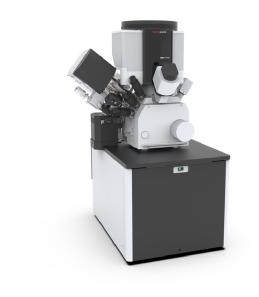 Focused Ion Beam (PFIB) microscope. The microscope is key to the accelerated development of new battery chemistries, providing unique access to the critical interfaces within battery cells that dictate best performance. This will be instrumental in developing new materials for better batteries, regardless of their end use application.
Focused Ion Beam (PFIB) microscope. The microscope is key to the accelerated development of new battery chemistries, providing unique access to the critical interfaces within battery cells that dictate best performance. This will be instrumental in developing new materials for better batteries, regardless of their end use application.
This PFIB will be the first specifically configured microscope dedicated to battery research in the world, allowing researchers at WMG to inform battery manufacturing, answer key scientific questions and link with industry and growing supply chains.
There is increased recognition in the battery community that the integration of new chemistries needed for the UK Government’s 2030 electric vehicle battery targets will require integrating new manufacturing processes with advanced microscopic characterisation. The PFIB has been specifically designed to address the critical challenges of studying alkali-based battery systems and will provide unique insights needed for the development of next generation batteries.
 The performance of battery materials is dictated by the stability, efficiency and functionality of the interfaces, i.e. the solid electrolyte interphase (SEI) at the anode and oxygen-induced cathode-electrolyte interface (CEI) at the cathode. Attempts to analyse these interfaces, in order to determine structure and chemistry, is seriously compromised using conventional techniques by the extreme air-sensitivity, beam sensitivity and the high volatility of certain species present. The specially configured PFIB microscope will address these issues.
The performance of battery materials is dictated by the stability, efficiency and functionality of the interfaces, i.e. the solid electrolyte interphase (SEI) at the anode and oxygen-induced cathode-electrolyte interface (CEI) at the cathode. Attempts to analyse these interfaces, in order to determine structure and chemistry, is seriously compromised using conventional techniques by the extreme air-sensitivity, beam sensitivity and the high volatility of certain species present. The specially configured PFIB microscope will address these issues.
WMG is one of seven HVM Catapult centres in the UK and is the lead centre for transport electrification. Investment in this PFIB is part of a range of equipment investments by the HVM Catapult and the University of Warwick to maintain WMG’s leading position in battery technology.
The PFIB has already secured interest from the Faraday Institution and from the Royal Academy of Engineering’s Lord Bhattacharyya Education Programme. Starting in the Autumn, a student will use this for a project entitled “The development of a new multi-modal capability for investigating the performance-controlling interfaces and microstructures that underpin operation of battery materials.”
The Lord Bhattacharyya Education Programme provides up to 90 bursaries annually for local students from lower socio-economic backgrounds. The objectives for the scheme include encouraging a greater number of young people from a more diverse range of backgrounds, raising their aspirations and skill levels. Moreover, it supports the growth of a science and engineering skills base for the UK.
The project will make extensive use of the new system to develop strategies for studying the degradation of buried interfaces and structure dynamics in state-of-the-art high Ni NMC cathodes as a function of cycle ageing i.e., the evolution of the cathode-electrolyte interphases. The platform provides some unique opportunities for developing powerful new ways to characterise these controlling interfaces and will form the basis for the project. Preliminary research will commence in October 2023. The project will be advertised online for interested applicants to apply – the studentships page, Jobs.ac.uk, FindAPhD.com and the Doctoral College website.
Find out more about WMG’s electrochemical research here: Electrochemical Materials (warwick.ac.uk)
The new PFIB microscope will be based in WMG’s Advanced Material Manufacturing Centre (AMMC).
WMG welcomes Indian Forum of Parliamentarians
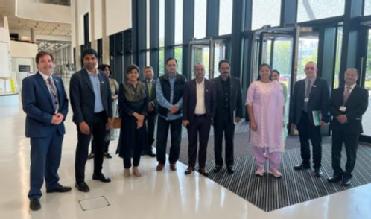 On Friday (16th June) Professor Robin Clark, Dean of WMG; and Professor David Greenwood, CEO of the High Value Manufacturing Catapult and Director of Industrial Engagement at WMG, were pleased to welcome guests from the Indian Forum of Parliamentarians.
On Friday (16th June) Professor Robin Clark, Dean of WMG; and Professor David Greenwood, CEO of the High Value Manufacturing Catapult and Director of Industrial Engagement at WMG, were pleased to welcome guests from the Indian Forum of Parliamentarians.
The delegation was made up of representatives from across various political parties including Shri Rajiv Pratap Rudy, Chair of the Forum of Parliamentarians; Ms. Vandana Chavan - National Congress Party; Shri Krishna Devarayalu Lavu - Yuvajana Sramika Rythu Congress Party; Shri Sujeet Kumar - Biju Janata Dal; Shri N K Premachandran - Revolutionary Socialist Party; and Shri Brijendra Singh - Bharatiya Janata Party.
The guests were particularly keen to hear more about WMG’s research and education programmes in electrification and mobility.
They were given a tour of the real-world demo site of the track system for the Coventry Very Light Rail flagship transport project, before Professor David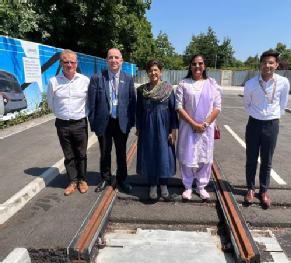 Greenwood led a tour of the Energy Innovation Centre (EIC) the home of WMG’s battery research.
Greenwood led a tour of the Energy Innovation Centre (EIC) the home of WMG’s battery research.
Finally the group heard more about the Warwick Moto project, where engineering students have been tasked with designing, building and racing an electric superbike.
The parliamentarians also had the opportunity to meet with Indian PhD students and researchers, studying and working at WMG.
Professor Robin Clark, Dean of WMG, explained: “ It was a pleasure to welcome the group of Indian Parliamentarians. Our relationship with India is long standing, and one that we value very highly.
“One example of our commitment is the strength of our relationship with IIT (Indian Institute of Technology) Kharagpur, whom in October 2022 we signed a Memorandum of Understanding (MoU) for a further five years, having first started in 2006.
We are increasingly appreciating the breadth of opportunity India presents, both in the academic and industrial spaces. As India is our main focus internationally at present, we expect to see more visits and more projects over the coming months and years!”
New taste and smell test could diagnose Alzheimer's long before memory loss starts
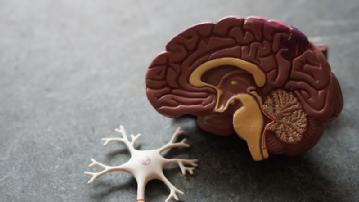
A simple smell and taste test could revolutionise diagnosis of Alzheimer’s – long before symptoms of memory loss even arise.
Scientists are working on a ground-breaking medical screening for the disease which could also improve treatment options. The research is based on growing evidence that people with Alzheimer’s can lose their sense of smell and taste many months or even years before other symptoms, such as memory loss, become apparent.
An early diagnosis is critical for those with the disease. New drug technology can slow, or even reverse the progress of Alzheimer’s, but only if the disease is detected early enough. The drug, lecanemab, is one of two new treatments for the disease.
The research, led by WMG at the University of Warwick together with Superlunary Labs and with support from University Hospitals Coventry & Warwickshire (UHCW) NHS Trust, New-Food innovation, and Alzheimer’s Society, could lead to UK-wide screening services where members of the public can take a simple smell and taste test. Those who perform poorly can then be referred for further tests which could result in an Alzheimer’s diagnosis.
The novel solution provides accurately simulated flavour samples (known as virtual flavour, developed in collaboration with New Food Innovation) via an easy-to-use low-cost dispenser, which could be used by a nurse as part of an annual health check, in pharmacies, care homes, community centres and even in the home.
While in the trial stages at the moment, academics hope that one day an inclusive mobile Alzheimer’s screening unit could reduce significant pressures on the NHS and ease waiting times for those who are struggling to get an appointment with their GPs.
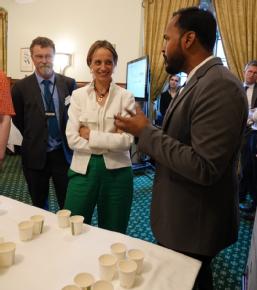 Professor Alan Chalmers from WMG at the University of Warwick said, “In this simple screening test, people will be given different flavours to smell and taste – they then determine which is sweeter, less astringent, smells more of lemon, for example. It’s an easy, non-invasive test which can be rolled out to people quickly across the UK.
Professor Alan Chalmers from WMG at the University of Warwick said, “In this simple screening test, people will be given different flavours to smell and taste – they then determine which is sweeter, less astringent, smells more of lemon, for example. It’s an easy, non-invasive test which can be rolled out to people quickly across the UK.
“At the moment, people who present with symptoms of memory loss are referred for MRI scans and spinal fluid tests to confirm a diagnosis. By the time memory loss occurs things are often too late; pioneering drug treatments only perform well in the early stages of degeneration. MRI scans and spinal fluid tests are currently not done before there is an indication of the disease as they are incredibly invasive, can cause distress and are expensive and time-consuming for the NHS. Failure of the flavour test can give the necessary early indication.
“Our preliminary data shows that there is a difference in the flavour detection of those with Alzheimer’s compared to those without the disease, so we hope to get further backing and implement these screening tests UK-wide.
“It’s important to note that the loss of smell and taste associated with Alzheimer’s is quite different to that of long COVID. While COVID could cause a loss of the sense of taste and smell, long COVID can alter your sense of flavour – a combination of taste, smell and mouthfeel – rather than diminish it.”
This research was showcased by the University of Warwick alongside the Alzheimer’s Society, at an All-Party Parliamentary Group (APPG) on dementia, on 14 June. The APPG is hosted by Sir Jeremy Wright, MP for Kenilworth & Southam and vice-chair of the all-party parliamentary group on Dementia.
14 June. The APPG is hosted by Sir Jeremy Wright, MP for Kenilworth & Southam and vice-chair of the all-party parliamentary group on Dementia.
Sir Jeremy Wright MP added: “I am delighted to be hosting an event at the House of Commons focussing on a development that could contribute to a significant improvement in the mass diagnosis of Alzheimer’s, alongside the new strides in treatments that have been announced in recent months.”
Dr Richard Oakley, Associate Director of Research at Alzheimer’s Society, said: “It’s really exciting to see how researchers are thinking outside of the box about potential methods to detect the diseases that cause dementia at the earliest stages. This is so important now that new disease-modifying treatments are just around the corner.
“The NHS needs to be ready for these new treatments. We can’t be in a situation where new drugs are being approved but people can’t access them early when they work best. Alzheimer’s Society will continue to stand up for people living with dementia and push for more accurate, earlier dementia diagnosis in the NHS.”
Malcolm Barnes, Director of Superlunary Labs added, “Simplicity of the device and test is key to collecting big data across different age groups and demographics.”
